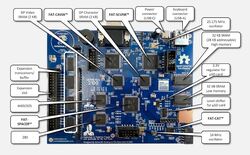CERBERUS2100: A Multi-CPU Open-Source Educational Microcomputer
Olimex recently featured the CERBERUS 2100 which is a multi-processor microcomputer that integrates classic computing architectures with modern design principles, offering a comprehensive educational platform for electronics and computer engineering students.
CERBERUS 2100 utilizes three custom ICs (CPLDs)—FAT-SCUNK, FAT-CAVIA, and FAT-SPACER—which are central to the system’s flexibility and programmability. These CPLDs enable in-system hardware reconfiguration, facilitating educational exploration and hardware experimentation.
The BIOS, written as an Arduino AVR sketch in C, is approachable and easily editable, reflecting the system’s open-source design. Users can engage with the system on a ‘bare metal’ level or through BASIC interpreters provided for both the Z80 and W65C02S CPUs.
CNX Software:
-
CERBERUS 2100 is a BASIC-programmable educational board with Z80 and 6502 8-bit CPUs
Olimex has just announced the launch of the CERBERUS 2100 open-source hardware, educational, multi-processor 8-bit computer with both Z80 and 6502 CPUs, as well as a Microchip AVR processor serving as an I/O controller.
The CERBERUS 2100 features several CPLD and is fully programmable from the lowest level (individual gates and flip-flops) up to BASIC interpreters running on the Z80 and 6502 CPUs. Olimex did not design this themselves as the hardware design is from Bernardo Kastrup (aka TheByteAttic), while BASIC interpreters were written by Alexander Sharikhin (6502) and Dean Belfield (Z80).

